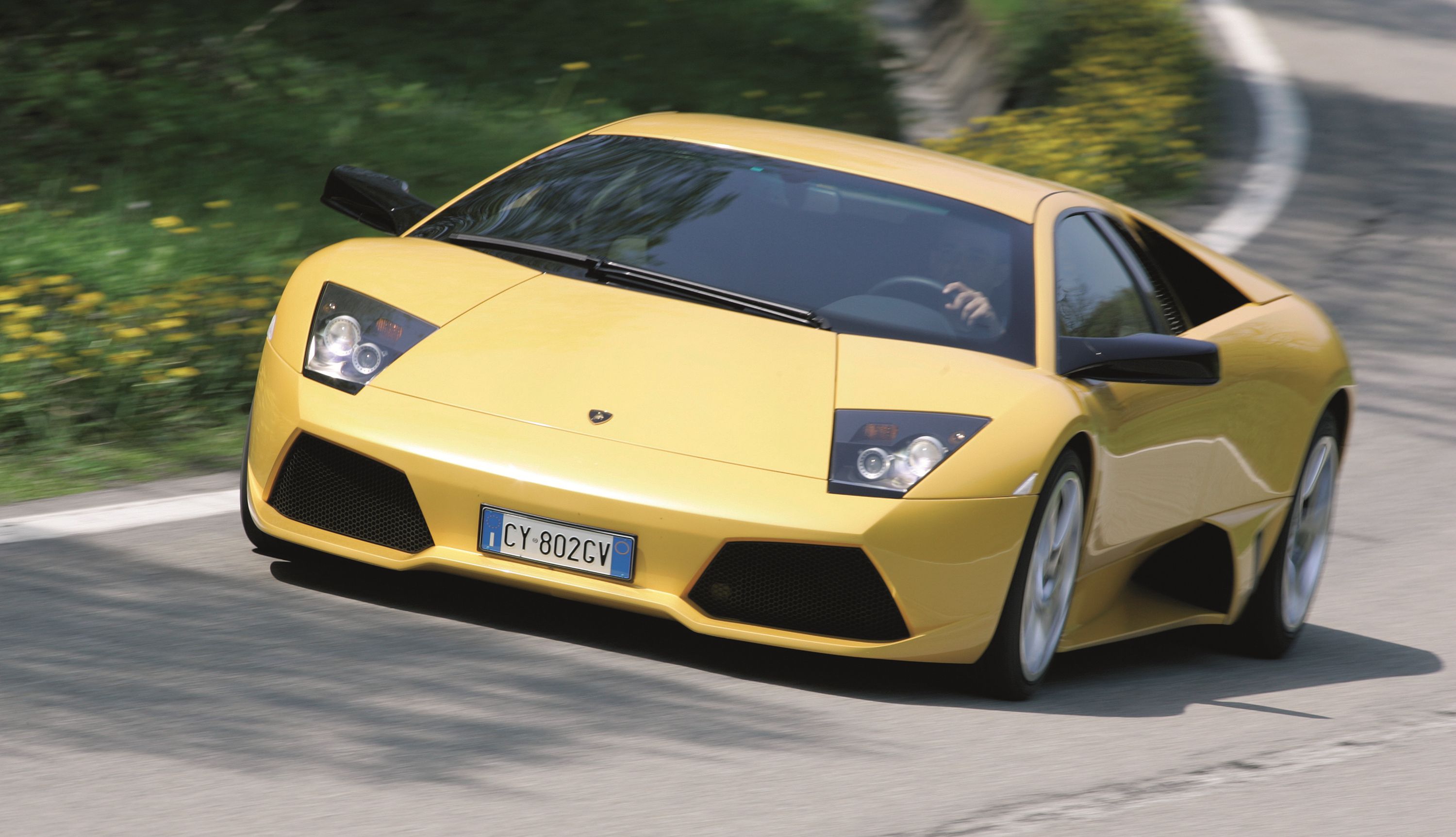
It's a bittersweet period for fans of the V12 engine. Cars like the Ferrari Purosangue, Aston Martin V12 Vantage, and the BMW M760i represent the pinnacle of V12 engineering, but also the beginning of the end. Lamborghini is embarking on its own extended farewell tour, so to speak, of its classic V12 this year. We already know that the Aventador Ultimae is the last V12 Lamborghini of its kind that won't be electrified, but the Italian manufacturer doesn't want us to forget the V12 supercars that paved the way for the Aventador. That includes the iconic Diablo and its predecessor, the Murcielago you see here.
Iconic V12, Poster-Worthy Looks
At the heart of the Murcielago was a 6.2-liter V12 that was far more powerful than the early Diablo's mill. Making 572 horsepower at 7,500 rpm and with all-wheel drive, it was capable of reaching 62 mph in 3.8 seconds, some achievement in 2001, especially considering the large catalytic converters that were required at the time. With dry-sump lubrication, the engine sat nearly two inches lower than the one in the Diablo, which helped to improve the Murcielago's drivability.
Although you often heard the Murcielago before you saw it, it was worth waiting around to take in the classic mid-engine supercar design. At just over 47 inches tall with the scissor doors closed, Lamborghini started with a clean sheet for the design and it still looks spectacular today.
The Audi Connection
The Murcielago was the first new model from Lamborghini under its ownership of parent company Audi. Although aspects of it are dated today, the German connection could account for the fact that this was a "friendlier" supercar than the Diablo. In the Diablo, you had to fight with heavy controls and a particularly cramped cabin, and the V12 was savagely loud. The Murcielago was more approachable while still having the ability to terrify you when pushed to its limits. Its steering was lighter than the Diablo's, too, although there was no getting away from the stiff ride. At lower speeds, the Murcielago felt uneasy and failed to shrink around the driver, but on open stretches, it came alive.
Roadster And More Powerful V12s
As with the more modern Aventador, the Murcielago range rapidly expanded over time. A roadster derivative arrived in 2004 before the second-generation Murcielago debuted in 2007. Dubbed the LP 640-4, it produced 631 hp at 8,000 rpm. This was followed by the LP 650-4 Roadster in 2019, which had a soft top that could be manually removed. In this guise, the Murcielago produced 641 hp at the same 8,000 rpm.
The most powerful Murcielago of all was the 670-4 Super Veloce or SV. For this model, more components fashioned from carbon fiber reduced the weight by around 220 pounds. Power from the V12 was increased to 661 hp, over 100 hp more than the first iteration of the Murcielago, and the 0-60 time slipped below three seconds.
The Murcielago retained the all-wheel-drive system from the Diablo with up to 70% of the torque distributed to the rear. At the time, the carbon fiber undercarriage with the mixed-structure floor panel with aluminum was Lamborghini's most rigid supporting structure ever.
Last Mechanical Transmission
While it wasn't the final incarnation of the V12 without forced induction or electrification, the Murcielago was the final V12 Lamborghini with a mechanical transmission. The six-speeder was later joined by an electronic automated transmission with levers mounted on the steering wheel. Although the Aventador improved on this transmission, its automated manual is one of the signs that the supercar has aged.
More Highlights
Outside of the core lineup covered above, the Murcielago also shone brightly in other ways.
-
It debuted on the racing track in 2004 with the R-GT, which was designed for the GT World Championship. Just nine examples were made and all were rear-wheel drive.
-
There were also several limited models through the years, including the 40th Anniversary model that celebrated four decades of Automobili Lamborghini. Just 50 units were made and they came with an upgraded exhaust system and a special leather cockpit.
-
The Murcielago was a star in both film and in gaming, with appearances in Batman Begins, Gran Turismo 7, Forza Horizon, and more. Batman Begins was an appropriate choice for a car named "bat" (Spanish for Murcielago), but legend has it that a bull named Murcielago survived the bullring. Later, this bull was gifted to a famous breeder named Don Antonio Miura.
-
The car took to the test track in Nardo, Puglia, by traveling 189.55 miles in one hour with an average speed in the best lap of 202.55 mph. It also broke the record back then for average speed over a distance of 100 miles.
In total, Lamborghini produced 4,099 examples of the Murcielago between 2001 and 2011. It was another glittering era for the "pure" V12 which will go out of production in its final form before the end of this year.
